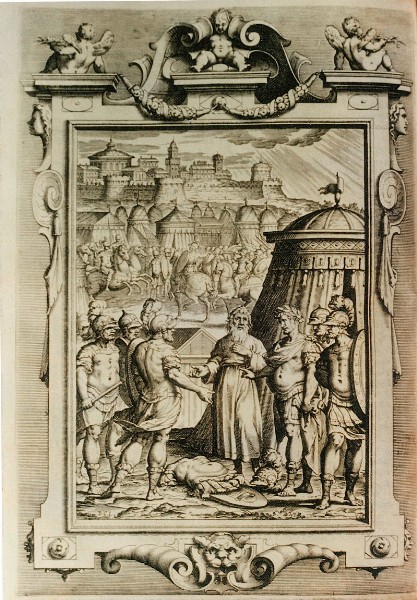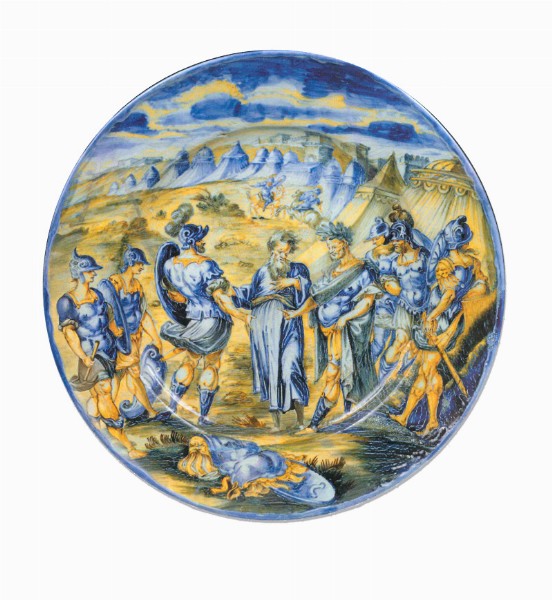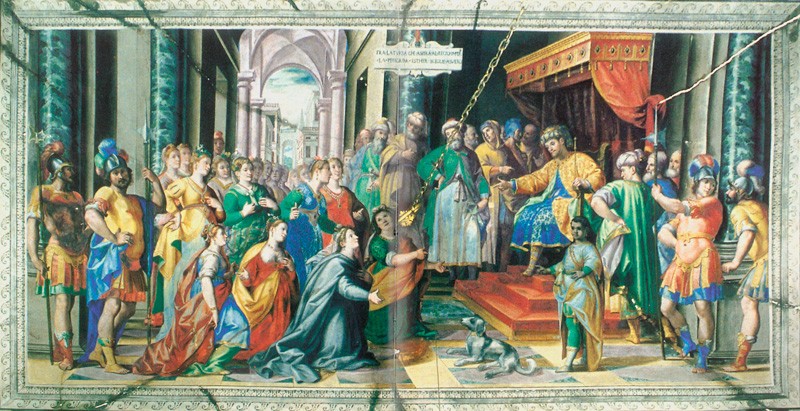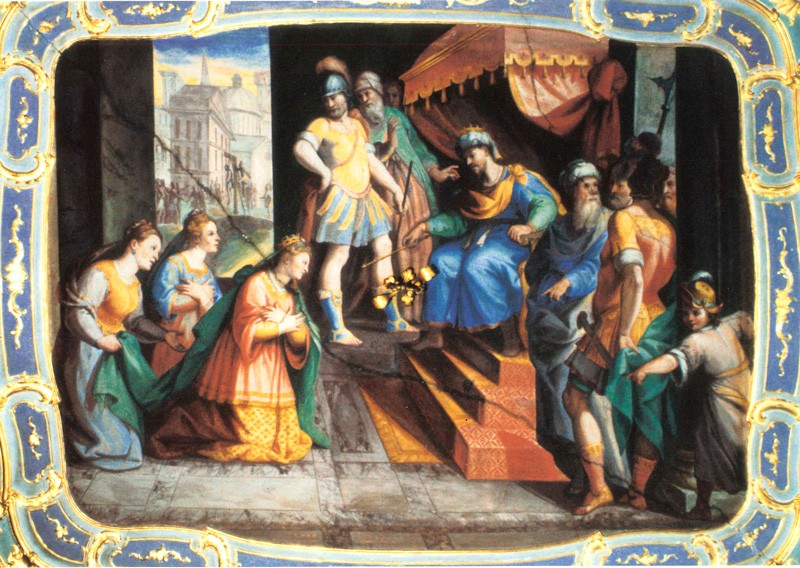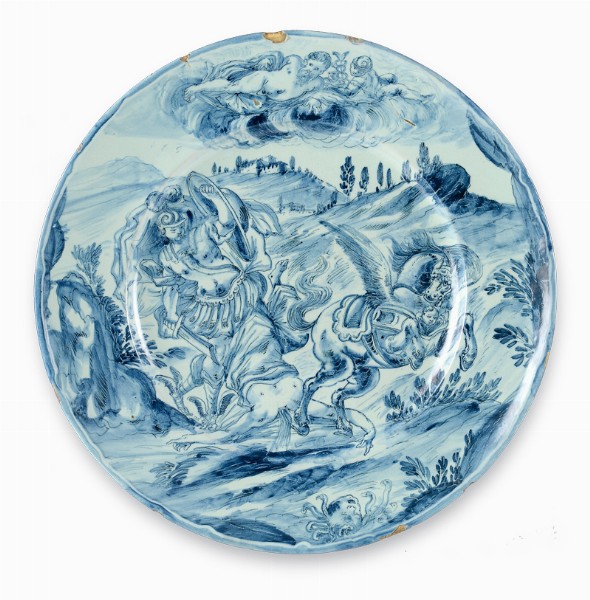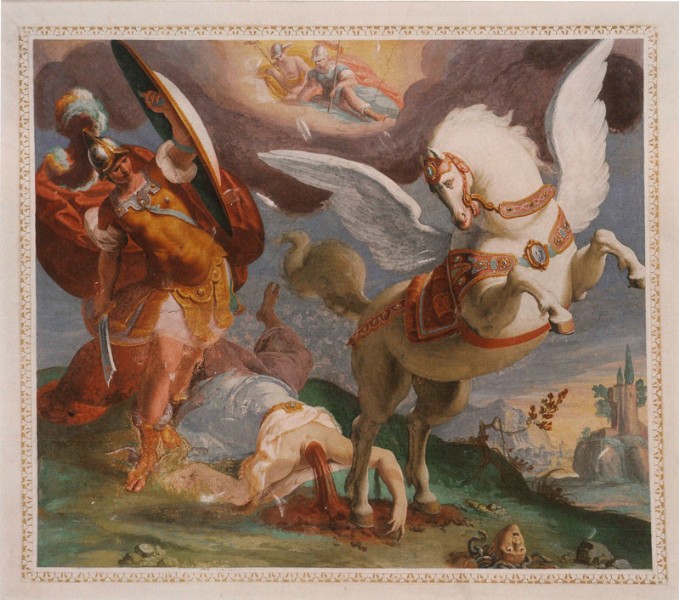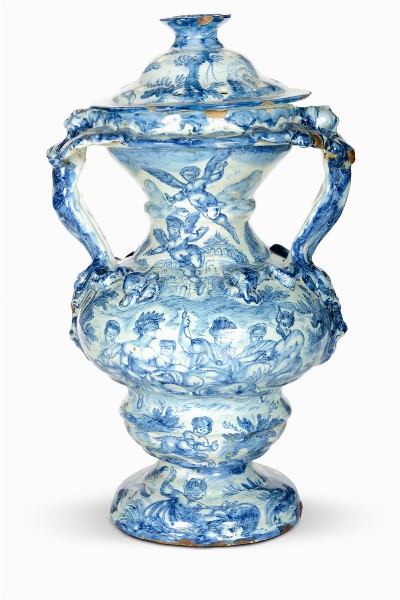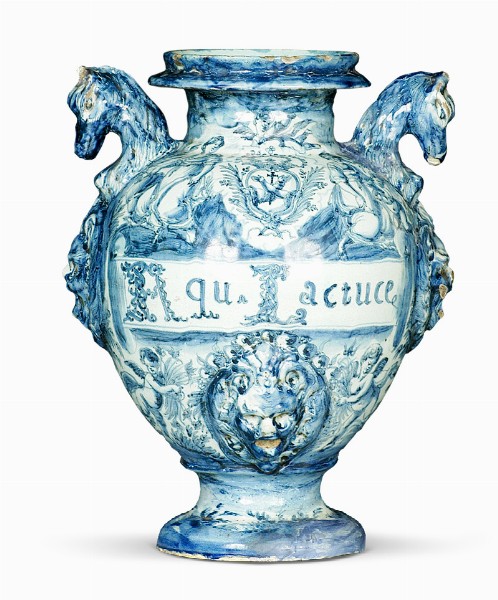Share our site
- Casa d'aste
- Vendere e Comprare
- Calendario Aste
- Tutte le prossime Aste
- Tutte le Aste passate
- Tutte le prossime Aste
- Tutte le Aste passate
Asta LiveAsta 927NumismaticaAsta 942Fine JewelsAsta 940Filatelia e Storia PostaleAsta 925Fine Chinese Works of ArtAsta 946Dimore ItalianeAsta TimeAsta 885WatchesAsta 949Arte Moderna e ContemporaneaAsta 963ArgentiAsta 960Maioliche e Porcellane da Collezione - Dipartimenti
Share
Cerca
Cerca
Magazine
Carlo Raffo
In the survey on the relationship between the painting in fresco and historiated decoration of Liguria majolicas, in order not to merely repeat the concepts expressed in detail on other occasions1, it was decided to propose four examples, three concrete and the fourth theoretical, in which a connection between the two species of painting and the awareness of the decorator in using them is taken into consideration.
The first case concerns a plate, probably from Savona, diameter 44 cm; with no mark, its polychrome decoration offers a remarkable taste of "baroque setting"2, appealing to different aspects (Fig. 1).
The comparison with the iconographic source allows us to understand the attitude of the painter on the model itself and reveals, in the amplitude of figurative concept, the ability to interpret it according to the aesthetic values of a changed artistic climate (fig. 2). Signs of a style independence in painting the figures are also evident: therefore the object deserves a special consideration for the quality of the drawing of some of them, although it may be understood in various ways, among the elements of a specific group of Ligurian majolicas, the historiated ones by copying the carvings illustrating the Genoese editions of the Gerusalemme Liberata3.
Here is the text published in 1617, in particular of the graphic kit for the VIII chant. The scene represents the moment in which Aliprando refers to Godfrey of Bouillon, with Peter the Hermit, of having found near a stream during a raid the lifeless body of a warrior, without head and right hand, wearing the bloody weapons belonging to Rinaldo, thus apparently truthful proof of his death.
In the survey on the relationship between the painting in fresco and historiated decoration of Liguria majolicas, in order not to merely repeat the concepts expressed in detail on other occasions1, it was decided to propose four examples, three concrete and the fourth theoretical, in which a connection between the two species of painting and the awareness of the decorator in using them is taken into consideration.
The first case concerns a plate, probably from Savona, diameter 44 cm; with no mark, its polychrome decoration offers a remarkable taste of "baroque setting"2, appealing to different aspects (Fig. 1).
The comparison with the iconographic source allows us to understand the attitude of the painter on the model itself and reveals, in the amplitude of figurative concept, the ability to interpret it according to the aesthetic values of a changed artistic climate (fig. 2). Signs of a style independence in painting the figures are also evident: therefore the object deserves a special consideration for the quality of the drawing of some of them, although it may be understood in various ways, among the elements of a specific group of Ligurian majolicas, the historiated ones by copying the carvings illustrating the Genoese editions of the Gerusalemme Liberata3.
Here is the text published in 1617, in particular of the graphic kit for the VIII chant. The scene represents the moment in which Aliprando refers to Godfrey of Bouillon, with Peter the Hermit, of having found near a stream during a raid the lifeless body of a warrior, without head and right hand, wearing the bloody weapons belonging to Rinaldo, thus apparently truthful proof of his death.
